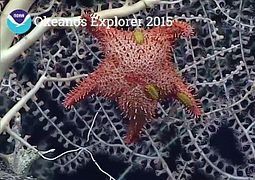
Starfish or sea stars are star-shaped echinoderms belonging to the class Asteroidea. Common usage frequently finds these names being also applied to ophiuroids, which are correctly referred to as brittle stars or basket stars. Starfish are also known as asteroids due to being in the class Asteroidea. About 1,900 species of starfish live on the seabed in all the world's oceans, from warm, tropical zones to frigid, polar regions. They are found from the intertidal zone down to abyssal depths, at 6,000 m (20,000 ft) below the surface.

A pedicellaria is a small wrench- or claw-shaped appendage with movable jaws, called valves, commonly found on echinoderms, particularly in sea stars and sea urchins. Each pedicellaria is an effector organ with its own set of muscles, neuropils, and sensory receptors and is therefore capable of reflex responses to the environment. Pedicellariae are poorly understood but in some taxa, they are thought to keep the body surface clear of algae, encrusting organisms, and other debris in conjunction with the ciliated epidermis present in all echinoderms.

The Asterinidae are a large family of sea stars in the order Valvatida.
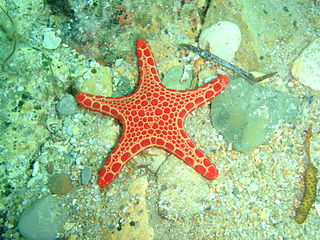
Goniasteridae constitute the largest family of sea stars, included in the order Valvatida. They are mostly deep-dwelling species, but the family also include several colorful shallow tropical species.

Culcita is a genus of sea stars. They are found in tropical waters. Some are kept in home aquariums.

The Forcipulatida are an order of sea stars, containing three families and 49 genera.
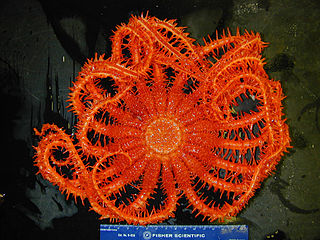
The Brisingids are deep-sea-dwelling starfish in the order Brisingida.

Hippasteria phrygiana is a sea star species, a member of the Goniasteridae family.

Hippasteria is one of 70 genera of sea stars in the diverse family Goniasteridae.

Fromia is a genus of starfish belonging to the family Goniasteridae.
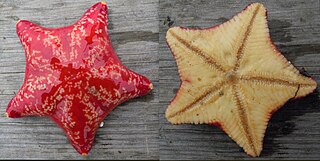
Poraniidae is a family of starfishes in the order Valvatida.
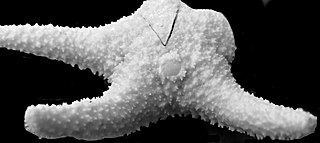
Bathyporania ascendens is a species of starfish in the family Poraniidae, and the only species of the genus Bathyporania. It is native to the Pacific Ocean and is found in deep water off the coast of North America.
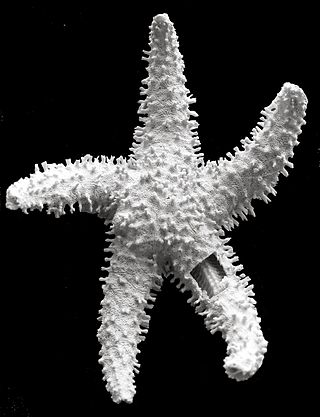
Clavaporania fitchorum is a species of starfish in the family Poraniidae. It is the only known species of the genus Clavaporania. It is native to the South Pacific Ocean and is found in deep water off the coast of Australia.

Pelagothuria is a genus of sea cucumbers in the family Pelagothuriidae. It is monotypic, being represented by the single species Pelagothuria natatrix.

Evoplosoma is a genus of deep-sea sea star in the family Goniasteridae.
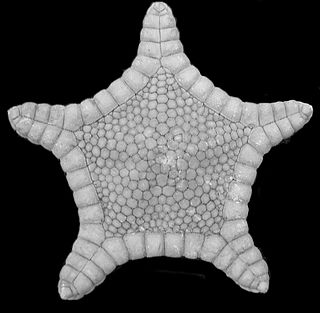
Astroceramus is a genus of abyssal sea stars in the family Goniasteridae.

Apollonaster is a genus of abyssal sea stars in the family Goniasteridae. They can be identified by their bare abactinal plate surfaces and multiple accessory granule rows on their abactinal plates. To date, Apollonaster has been found in the tropical Atlantic region and Hawaiian Islands region oceans, with no other locations or species being known as of 2015.

Sthenaster emmae is a species of deep sea corallivorous sea star. It is the only known species in the genus Sthenaster. This species in particular is found in the tropical Atlantic.
Evoplosoma claguei is a species of deep sea corallivores. This species in particular is found in seamounts in the North Pacific.
Evoplosoma voratus is a species of deep sea corallivores. This species in particular is found in seamounts in the North Pacific.


